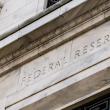by Sonal Desai, Ph.D., Head of Fixed Income, Franklin Templeton Investments
The Fed delivered another 75 bps rate hike and reiterated its Jackson Hole message: reducing inflation is now its one and only priority. But the Fed’s forecasts still seem too optimistic, and this could feed extended uncertainty and volatility in markets. Our Fixed Income CIO Sonal Desai shares her thoughts.
Another 75 basis point (bp) rate hike at the September Federal Reserve (Fed) policy meeting, and another forceful signal from Fed Chair Jerome Powell: “Our message has not changed at all from Jackson Hole.” At the Jackson Hole symposium in August, he had pushed back against market expectations of an early pivot back to rate cuts, emphasizing that bringing inflation under control will require a sustained period of tight monetary conditions. The message had been repeated by other senior Fed officials in the subsequent weeks, and markets had begun to listen, lifting expectations of the terminal policy rate—the policy rate at which the hiking cycle is expected to come to an end—and pricing out some of the rate cuts expected for next year.
Powell seems well aware that investors are still hoping for a dovish opening, and that the Fed needs to stay on message to avoid a market-driven loosening of financial conditions. Today’s press conference following the meeting included three important hawkish signals:
- The “dot plot”—a graphical representation of Fed’s rate trajectory—has become more realistic to us: the median policy rate for end-2022 has risen to 4.4%—a full percentage point higher than in June, Powell pointed out; the median rate for 2023 now stands at 4.6%.
- Powell noted that core personal consumption expenditures (PCE) inflation over the past three, six and 12 months has remained essentially unchanged above 4½%; underlying inflation gives no sign of coming down, notwithstanding monetary tightening and some slowdown in activity.
- Powell stressed that high inflation imposes severe economic hardship on the US population, especially on its most vulnerable citizens—pushing back against questions focused on the economic costs of projected higher unemployment.
However, there is still an element of wishful thinking in the Fed’s forecasts and rhetoric that partially undermines its message: The Fed forecasts a halving of inflation by next year, with the unemployment rate rising to just 4.4%. This is a bit more realistic than June’s 3.9%, but it still implies that inflation can be reduced substantially with unemployment barely above an estimated 4.0% natural rate.
Powell enumerated three special circumstances that might enable such a remarkable feat: (i) the gap between job openings and unemployed workers is so abnormally large that a reduction in job openings might cool the labor market with minimal impact on the unemployment rate; (ii) inflation expectations remain anchored; and (iii) adverse exogenous shocks to energy prices played a very important role and have partially reversed.
I would take much less comfort from these three factors: energy prices benefited from the release of the Strategic Petroleum Reserve, a favorable exogenous shock unlikely to be sustainable; Russia’s disruptions to energy markets could well continue; and inflation expectations, as Powell also acknowledged, are more likely to fully de-anchor with every additional month of high inflation.
I understand why the Fed is reluctant to project a more marked rise in unemployment or a more substantial drop in growth: critics would immediately accuse the central bank of wanting to engineer a recession.
The problem with these forecasts, however, is that they seem to turn the Fed’s message into “we’ll pay whatever price it takes to bring inflation down, but we don’t think it’s going to be a very high price.” Which leaves some investors still wondering if the Fed will balk at even a modestly higher price. Forecasting a 5%+ unemployment rate, for example, would send a clearer message that the Fed is serious.
I do believe this time the Fed is serious: it is determined to raise interest rates further, probably into the 4.5%-5.0% range, and hold them at the higher level until inflation has been brought down in a sustained manner. I think this will take longer than the Fed thinks and implies higher economic pain than it hopes. Ten-year US Treasury yields have moved substantially higher since mid-August. As the Fed keeps hiking, and its pain threshold gets tested, market yields will move higher still, and uncertainty will remain elevated at least until the Fed achieves a degree of monetary tightening where it feels comfortable pausing and assessing the situation. This leads us to continue to prefer higher quality credit while avoiding longer duration. Meanwhile, the Fed should keep its message as sober, realistic and consistent as possible if it wants to spare markets additional volatility—and false hopes.
*****
WHAT ARE THE RISKS?
All investments involve risks, including possible loss of principal. The value of investments can go down as well as up, and investors may not get back the full amount invested. Bond prices generally move in the opposite direction of interest rates. Thus, as prices of bonds in an investment portfolio adjust to a rise in interest rates, the value of the portfolio may decline.
IMPORTANT LEGAL INFORMATION
This material is intended to be of general interest only and should not be construed as individual investment advice or a recommendation or solicitation to buy, sell or hold any security or to adopt any investment strategy. It does not constitute legal or tax advice. This material may not be reproduced, distributed or published without prior written permission from Franklin Templeton.
The views expressed are those of the investment manager and the comments, opinions and analyses are rendered as at publication date and may change without notice. The underlying assumptions and these views are subject to change based on market and other conditions and may differ from other portfolio managers or of the firm as a whole. The information provided in this material is not intended as a complete analysis of every material fact regarding any country, region or market. There is no assurance that any prediction, projection or forecast on the economy, stock market, bond market or the economic trends of the markets will be realized. The value of investments and the income from them can go down as well as up and you may not get back the full amount that you invested. Past performance is not necessarily indicative nor a guarantee of future performance. All investments involve risks, including possible loss of principal.
Any research and analysis contained in this material has been procured by Franklin Templeton for its own purposes and may be acted upon in that connection and, as such, is provided to you incidentally. Data from third party sources may have been used in the preparation of this material and Franklin Templeton (“FT”) has not independently verified, validated or audited such data. Although information has been obtained from sources that Franklin Templeton believes to be reliable, no guarantee can be given as to its accuracy and such information may be incomplete or condensed and may be subject to change at any time without notice. The mention of any individual securities should neither constitute nor be construed as a recommendation to purchase, hold or sell any securities, and the information provided regarding such individual securities (if any) is not a sufficient basis upon which to make an investment decision. FT accepts no liability whatsoever for any loss arising from use of this information and reliance upon the comments, opinions and analyses in the material is at the sole discretion of the user.
Products, services and information may not be available in all jurisdictions and are offered outside the U.S. by other FT affiliates and/or their distributors as local laws and regulation permits. Please consult your own financial professional or Franklin Templeton institutional contact for further information on availability of products and services in your jurisdiction.
Issued in the U.S. by Franklin Distributors, LLC, One Franklin Parkway, San Mateo, California 94403-1906, (800) DIAL BEN/342-5236, franklintempleton.com – Franklin Distributors, LLC, member FINRA/SIPC, is the principal distributor of Franklin Templeton U.S. registered products, which are not FDIC insured; may lose value; and are not bank guaranteed and are available only in jurisdictions where an offer or solicitation of such products is permitted under applicable laws and regulation.














